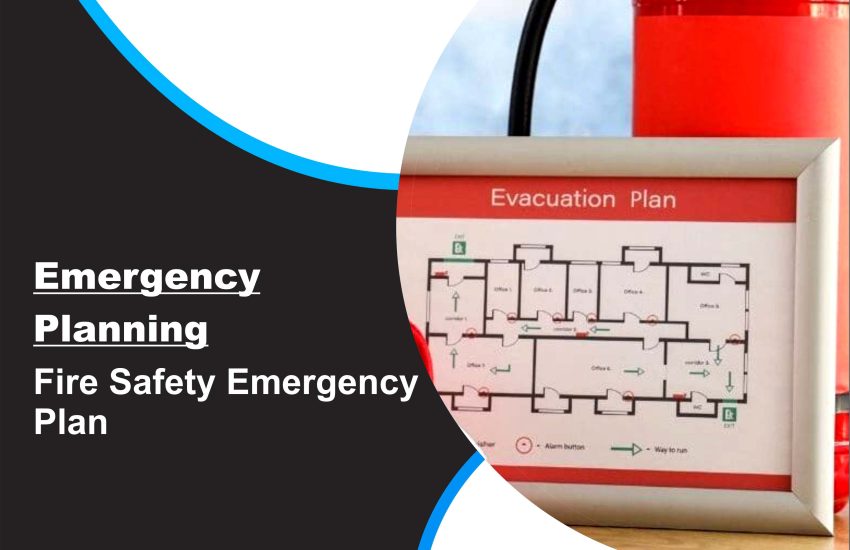Fire Safety Emergency Plan is a formal document that outlines the steps to take during a fire. It is designed to protect people and property by ensuring everyone knows what to do if a fire occurs.
This guide covers the key components of a Fire Safety Emergency Plan. These include evacuation steps, preventive measures, responsibilities of key personnel, communication strategies, support for vulnerable groups, and fire equipment maintenance. At the end, we provide a downloadable Fire Safety Emergency Plan template (PDF) to help you document and implement your own plan.
Core Components of a Fire Safety Emergency Plan
1. Emergency Contact Information
This section lists the contact details of key staff and nearby fire stations. It includes:
- Incident Controller – oversees the response, manages evacuation, and directs people to exits using building drawings.
- Fire Wardens – help evacuate people, assist those in need, and ensure procedures are followed.
A clear list of all fire safety personnel should be included to ensure accountability.
2. Building Layout and High-Risk Areas
This part of the plan should show:
- The building layout with exits, alarm call points, and fire equipment.
- High-risk areas such as kitchens, chemical storage rooms, or flammable materials zones.
Maps and floor plans help responders and staff act quickly and safely.
3. Emergency Evacuation Procedures
Evacuation steps must be clear and include:
- Evacuation signals (alarms, PA systems)
- Escape routes and maps
- Evacuation marshals assigned by area
- PEEPs (Personal Emergency Evacuation Plans) for vulnerable individuals
- Roll-call managers to account for everyone
- Sweepers to check all rooms
- Assembly points for safe gathering after evacuation
These procedures should be taught during staff orientation and reviewed regularly.
4. Fire Detection and Firefighting Equipment
This section should detail:
- Locations of fire alarms, smoke detectors, and sprinklers
- Instructions on how to activate alarms
- Placement of fire extinguishers, hoses, and other firefighting tools
- Training for staff on equipment use
- Inspection schedules with records of maintenance
Proper training ensures quick, safe action when needed.
5. Communication Plans
A fire emergency requires fast and clear communication. The plan must outline:
- How to notify employees, visitors, and emergency services
- Steps to account for all individuals
- When and how to contact emergency responders
Effective communication helps save lives and reduces panic.
6. Training and Drills
Regular training and fire drills are essential. This section should include:
- A training schedule
- Who is responsible for organizing drills
- Topics to be covered in fire safety training
Frequent practice builds confidence and ensures everyone knows their role.
7. Fire Emergency Grab Bag
This bag supports immediate needs during a fire emergency. It should include:
- Flashlights and batteries
- First aid supplies
- Whistles
- Important documents (e.g., ID, insurance)
- Snacks and bottled water
The plan must state where to find the grab bag and who is responsible for it.
Conclusion
A comprehensive Fire Safety Emergency Plan protects lives, property, and business continuity. It must be kept up to date to reflect changes in staff, building layout, or risks. Review it regularly to ensure it’s always ready to guide an effective emergency response.


